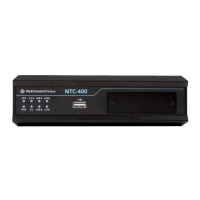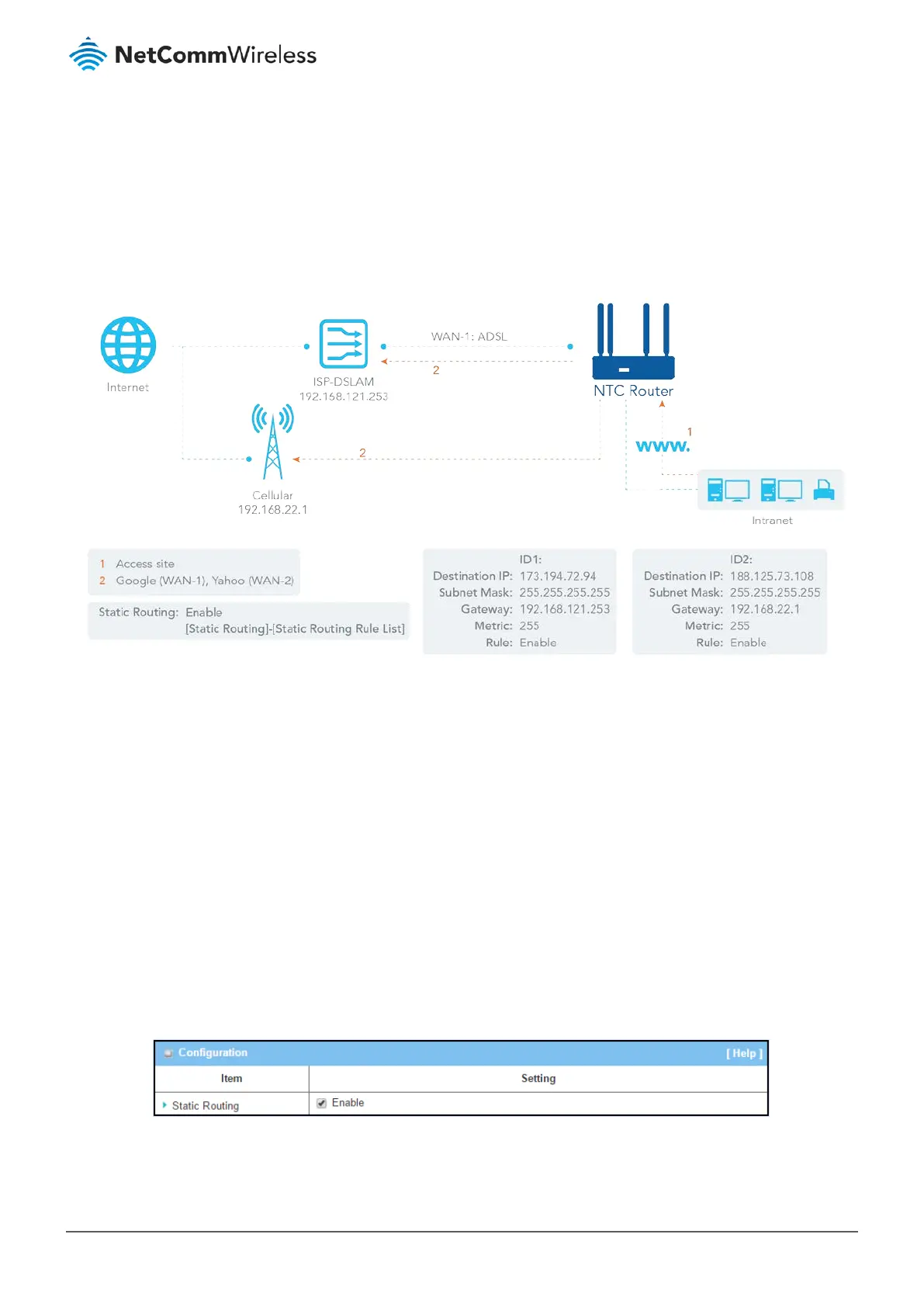The Static Routing function lets you define the routing paths for dedicated hosts/servers or subnets to store in the routing
table. The router routes incoming packets to different peer gateways based on the routing table.
The administrator of the router can specify what kinds of packets to be transferred via which interface and which peer
gateway to their destination. This can be carried out by the Static Routing feature. Dedicated packet flows from the Intranet
will be routed to their destination via the pre-defined peer gateway and corresponding router interface that are manually
defined in the system routing table.
Figure 161 – Static Routing
3.6.1.1 Static Routing Setting
Navigate to the Basic Network > Routing > Static Routing tab.
There are three configuration windows for the static routing feature including "Configuration", "Static Routing Rule List" and
"Static Routing Rule Configuration" windows. The Configuration window lets you activate the global static routing feature.
Even if there are already routing rules, if you want to disable routing temporarily, uncheck the Enable box to disable it. The
Static Routing Rule List window lists all your defined static routing rule entries. Use the "Add" or "Edit" buttons to add and
create a new static routing rule or to modify an existed one.
When the "Add" or "Edit" buttons are applied, the Static Routing Rule Configuration window appears to let you define a
static routing rule.
3.6.1.2 Enable Static Routing
Check Enable to activate the "Static Routing" feature.
Figure 162 – Enable Static Routing

